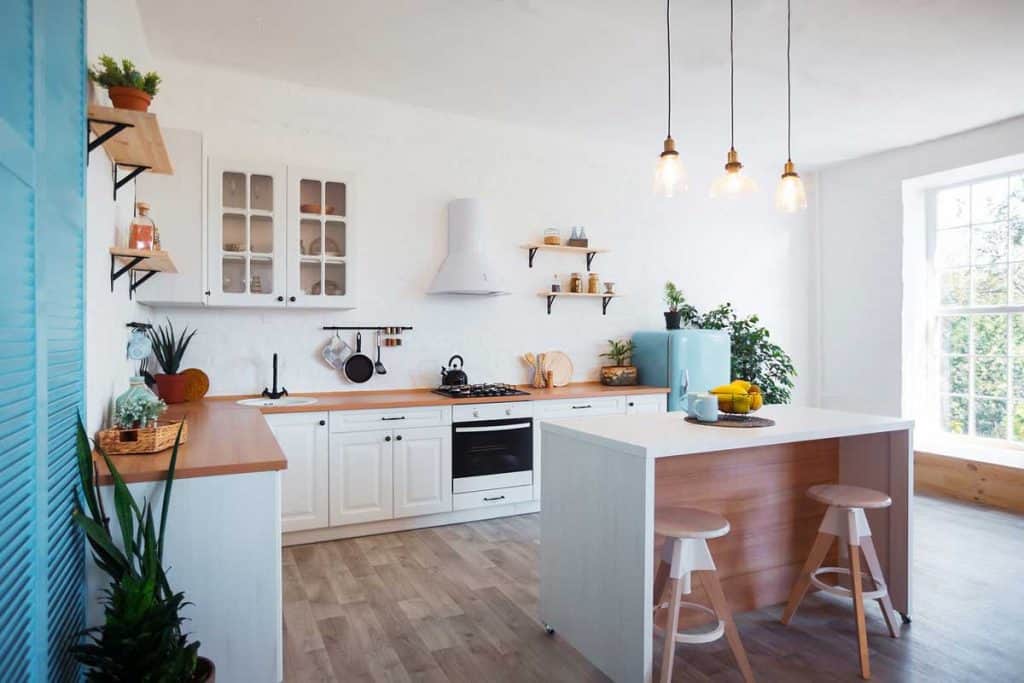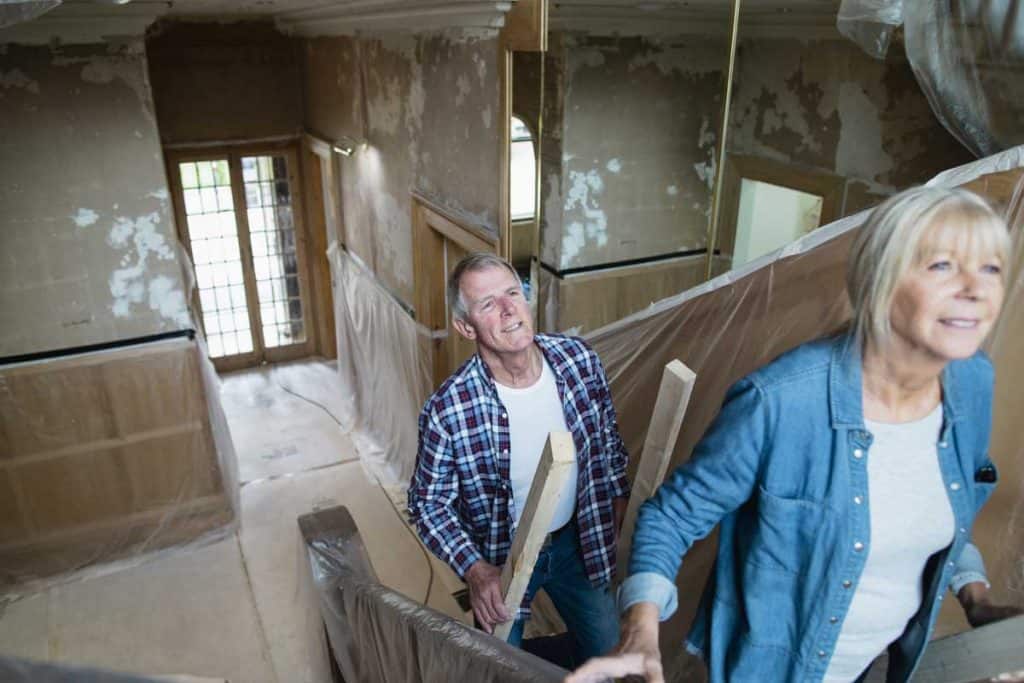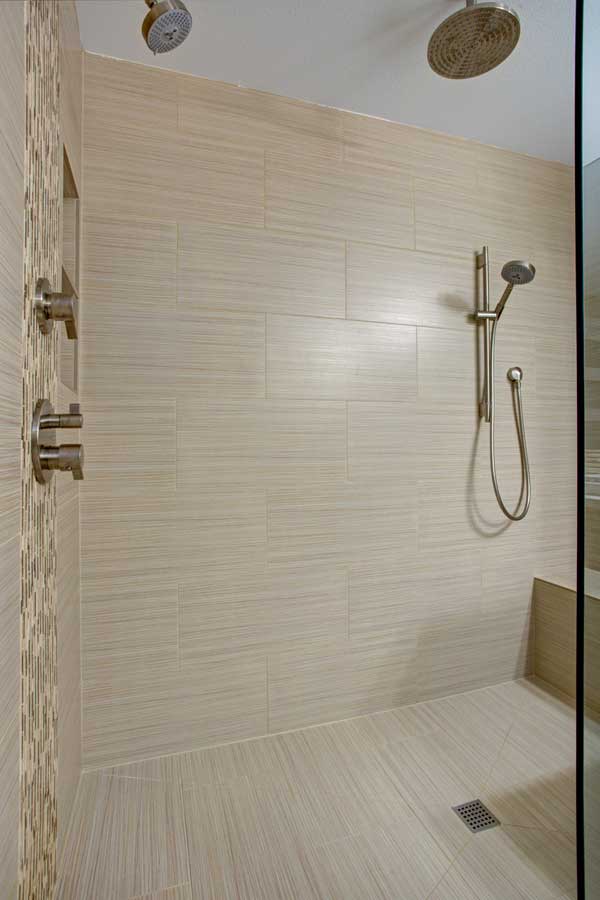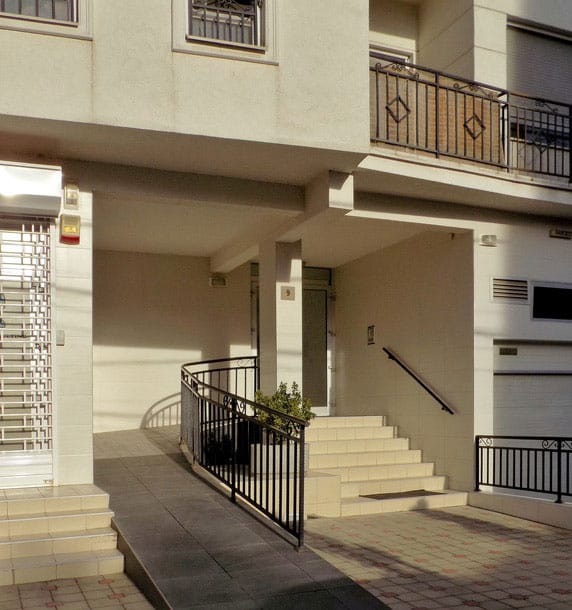As the city’s population ages, we feel urged as homeowners and landlords to make age-in-place fixes. Most people want to stay in their home for as long as possible, also known as “ageing in place” because their home is comfortable, familiar, and full of good memories. These renovations are all about maintaining independence. The problem is that most homes didn’t get designed around the specific needs of seniors. Renovating will make your home a place for all ages.
Completing a home renovation can help you maintain independence while enjoying the comforts of home. Even more, people are choosing to age in place than ever before. Ageing in place gets driven by the high costs of long-term care and the growing senior generation that enjoys a more active, vibrant lifestyle than previous generations. Technology and the broader availability of services makes it easier to remain in your own homes as well. Many changes can be made to a home to make it safer, more functional and helps with mobility that reduces social isolation. Go through your house looking for problem areas like potential tripping, slipping hazards, as well as areas that are hard to access and more difficult to maintain.
Safer floors
Reducing the odds of slipping is all about a smart choice of flooring material. Look for flooring that provides more traction and stay away from shiny, smooth surfaces. Avoid ceramic tile. It is cold, hard, and unforgiving in the event of a fall. It is also slippery when wet and hard to stand on for long periods at a time, especially with lower back or hip pain.

Replace flooring with slip-resistant material. Vinyl and linoleum can provide more traction, and the somewhat softer material can be more forgiving when someone falls. The floors should be natural to clean and comfortable. Rubber floors are very soft and naturally slip-resistant, along with being fire resistant as well. When treated with water-soluble wax, the rubber flooring becomes water and stain resistant, making it extremely easy to maintain. Eliminate trip points like thresholds or reduce the height. We have to explore the floor level at various locations; these points should be easily visible, no obstructions or blinds. Some houses renovated before; may have a raised floor that is too high to be able to step up quickly. Uneven tiles pose fall hazards for people of all ages. Opt for floor consistency throughout the home and fewer and smoother transitions across flooring surfaces. When you do have transitions, always try to minimize the height difference between them.
Grab bar or lever
Simply replacing doorknobs with lever-style products can make life easier when ageing. Levers are also best on faucets and illuminated rocker switches are better than the standard toggle light switches. Lever style doorknobs can prevent unnecessary struggles. Levers are more accessible to grip than round doorknobs because they don’t require a twisting motion. Levers are especially helpful for people who have arthritis or other conditions that limit movement. D-shaped pulls are much easier to grasp, even for people with a reduced range of motion in their fingers. You can also put grab bars in bathrooms; installing a grab bar can prevent falls and save lives. Getting in and out of bed can be challenging for older adults, so install safety handles on the bed to make this easier.
Keep it well lit
We have to make sure there’s adequate lighting in every room, hallway, and entryway and upgrade the lighting throughout the home. Installing extra lights and the importance of colour contrast in the kitchen to determine where the stovetop ends, and the counter begins. Make sure the primary bathroom is well-lit and that there are plenty of night lights to illuminate the hallway and bathroom so you can see where you’re going. Lighting in the kitchen is another important consideration. If you frequently keep the curtains or blinds closed, think how important it is to keep the kitchen well-lit.

Good lighting will help prevent falls, accidents when preparing food, and bumping into the counter or an open cabinet. You can make switch replacements throughout the house to make it easier to turn on the lights. Consider installing a motion-sensor light that will turn on automatically when you enter the home. Lighting is also critical on the stairs, so make sure the entire stairway gets well-lit from top to bottom.
Kitchen Precautions
The ageing-in-place angle is creating enough space to accommodate a wheelchair. Still, the immediate payoff is a space where multiple cooks can easily manoeuvre around each other. The critical thing in kitchens is to keep it flexible. Varying kitchen countertop heights allows for seated or wheelchair accessible stations as you age, and they work well for shorter adults and kids as well. Installing countertops and cabinets at a more convenient height can make it easier for someone using a wheelchair or scooter to prepare food.
Replace kitchen cabinets with drawers and pull out shelves; it makes it easier to see and retrieve items without bending down as well as brings the contents of the cabinet out into the light. Look for cabinets with doors to close more comfortable, and drawers with D-shaped pulls instead of knobs.
For large or open kitchens, install a movable island. It gives people flexibility because you can push it out of the way, and it provides space if a walker or wheelchair becomes necessary. It helps to make home modifications before the need arises. Pull-down shelving reduces the reaching you have to do to locate items or install pull out drawers to eliminate having to bend down. You want to eliminate the need for a step stool in the kitchen, which can easily lead to a fall. You can consider installing a shallow sink, which makes it easier to reach into it.
Appliances
You have to pay more attention to the kitchen stove by looking for additional convenience and safety features. Gas stoves are often more dangerous because of the open flame. Electric stoves often come with a colour indicator that alerts you when the range is still hot, even after the range gets turned off. Choose a refrigerator model with long handles that allow for multiple gripping points and plenty of door storage. Some models have slide-out shelving to make it easier to reach items in the back. Adjust the locations of major appliances. Appliances can also get lowered or raised to make using them more convenient and safer. Dishwashers built off the floor make loading and unloading easier on the back and joints. Ovens can also get raised to avoid painful bending and to make it easier to see when the heat needs to get turned down.

Widen Hallways and Doors
Look at the door frame of the primary entrance. Now, look at the threshold; this is the tiny lip that you have to walk over when you enter through the door and should not be very high. If doorways are too narrow, you may need to expand them to accommodate a mobility device by replacing the existing frame and adding insulation, drywall and paint.
Ageing in place may require you to widen some doorways, and pocket doors are for when a swinging door doesn’t work. Pocket doors make mobility between rooms possible as the door is out of the way when opened and the hinge will also prevent catching on wheelchairs. Entries too narrow can get extended for wheelchair and walker access by removing the existing door unit and trim. Install a new, more extensive door unit and trim. Remember wheelchair height for entrances, as well.
Walk in shower

The bathroom is the place in the home where an older person slips and falls because of the excess moisture. The large “curb less” showers can accommodate a wheelchair or eliminate the need to step over anything to enter. It’s an improvement that pays off for younger couples too as the larger space can look luxe and spa-like. A walk-in shower is ideal since it gets harder to step in and out of a tub. If you want to get a walk-in tub, it is less expensive to install handrails near the tub or shower and a handrail inside. The shower stall can get a built-in corner seat and a handheld showerhead for someone with limited mobility. A very convenient option for ageing-in-place bathrooms is to install a handheld showerhead. Consider putting in a shower seat and installing a low shelf in the shower to make it easier to reach the soap and shampoo when they’re sitting. Shower grab bars are a way to make bathing safer. A faucet control reduces the chances of scalding, and a pressure-balanced power does the same in the shower.
Comfort height toilets
A great addition is a comfort-height toilet, which is higher than a regular toilet and makes the sitting-to-standing motion easier. The toilet model sits higher off the ground, or you can purchase a toilet seat riser, which elevates the height of the existing bathroom. You can add grab bars by the toilet. Comfort height toilets make it easier for someone who is elderly or disabled to sit down and get up. A pricier option is the smart toilet, which cleans and dries the user who has mobility issues. Raised toilet seats are secure, comfortable, and even affordable. A toilet seat for ageing in place prevents you from needing assistance and makes it easier to go to the bathroom. Lower the bathroom sink to make sure there is proper knee clearance as well.
Overall Layout and design
It’s a good idea to leave the living room as open as you can to navigate a wheelchair or a walker. Ageing in place requires addressing such issues now since things can change rapidly as a person ages. It’s better to clear the space and have it open plan, so you don’t have to create it when you need it later. Consider having a bedroom and bathroom on the main floor so you can avoid the stairs or you can install a chair lift so you can get upstairs and downstairs safely. If you don’t move out of a two-story home, you may want to consider moving the master bedroom downstairs. When feasible, opt for open spaces over small rooms and narrow hallways and combine your essential rooms onto the first floor. It is vital to creating at least one no-step entry into the home.
Ramps and Elevators

As you age, going up and down a long set of stairs will become dangerous, so do whatever it takes to get a bedroom on the main floor, even if you have to convert a spare room. Stairs have to be in good condition and have a non-slip, textured surface. Clearly defined steps that show where the edge of the tread is can help prevent falls. The railing has to be sturdy and not wobble when used. Handrails are a must, on both sides of the staircase if possible. A safer option is to avoid the steps and install a ramp. Wheelchair access is the most apparent reason, but a ramp is also helpful for ageing-in-place design, and it’s safer than stairs for young children.
If you plan to sell your home, a well-designed ramp could even make your home more appealing to a broader range of buyers. If a home has more than one level, an elevator or chair lift can help seniors move between floors with a sense of security they need. Elevators add convenience, safety and having a home elevator installed can add significant value to your home. Homebuyers gravitate toward elevator access because they are looking to the future with accessibility. Even if you don’t currently benefit from an elevator, it significantly increases your home’s resale value. It is less expensive to put in an elevator than it is to add a master bedroom and bath on the first floor.
Planning a major home renovation can be very overwhelming and finding the right information can be difficult. To help you we have developed a free guide that is beneficial for anyone who is in the planning stage of a major renovation. I know you will enjoy it. It is packed with super practical information covering 7 of the biggest mistakes made when planning a major home renovation
Click on the link below to download the 7 Biggest Mistakes To Avoid When Planning Your Major Home Renovation.
Download our FREE guide and avoid mistakes that will cost you money and time on your renovation.


